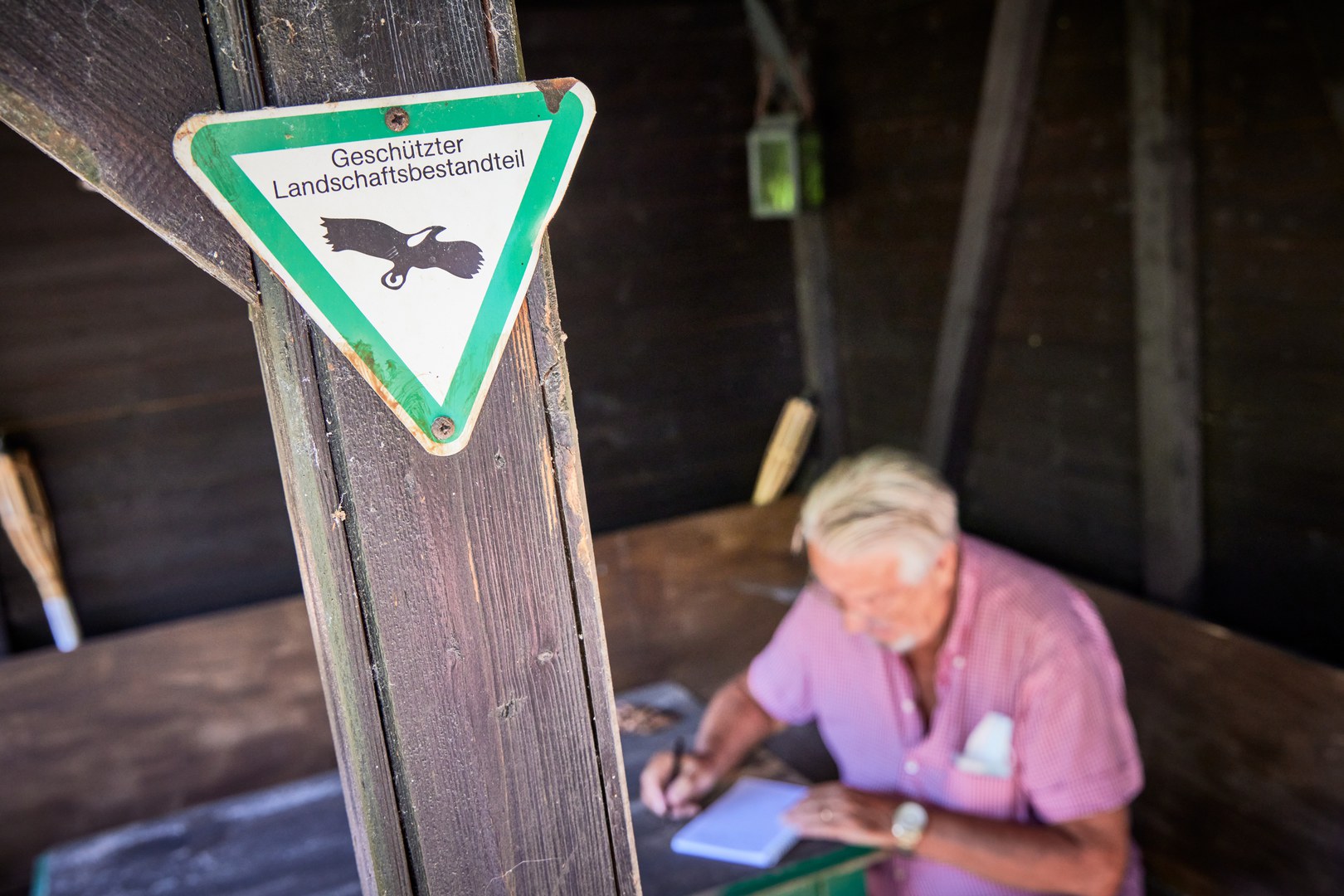Wolfgang Böhme dips a landing net into a little garden pond; the water gurgles and ripples. Adeptly, he brings in the net and reaches inside, looking for amphibians. He comes up with a fire salamander larva, a few centimeters long, wriggling in his hand. “They have gills, so the larvae have to quickly go back into the water,” he says, letting it gently glide back into the cool water.
At age 77, the retired professor’s experience from working at Koenig Zoological Research Museum in Bonn shows, including the many years he served there as Deputy Director, most recently. An amphibian and reptile expert, Dr. Böhme has conducted research in the US, Asia and Africa on newly identified species. The professor still goes in to his office at the Museum every day, attending to matters he didn’t get around to during his active academic career.
Extensive lists of species
Dr. Böhme recently published a scientific monograph on his garden, located on the Annaberg in Friesdorf, which he has been passionate about for all of 36 years. Over the decades, the biologist has found nearly 800 different animal, plant and lichen species on his roughly 1,000 square meter patch of land, working in collaboration with other scientists. “And that is only part of the biodiversity there,” Böhme declares, “We don’t yet have complete data on insect groups, in particular.”
Getting out one of his many showcases, I see insects large and small impaled on needles, labeled. Eighty-three different species of wild bee have been documented from his garden, including numerous bumblebees. Stag beetles romp around on the property, and a barred grass snake. The latter was considered a subspecies for a long time until Wolfgang Böhme and his colleagues demonstrated that it is a separate species of snake. Allowing a snake in your garden? “She’s harmless,” the scientist laughs, for grass snakes have no venom glands.
Doing science “on the side”
Dr. Böhme conducted his scientific garden project more or less as a sideline activity. He paid attention to the wildlife around him while trimming the bushes. When removing algae from the little ponds, he would also fish out amphibian larvae. Whilst having breakfast on the terrace, he noted what birds were out and about by listening to their song. “I have the precise moment documented when I last heard a cuckoo on my property. That was in June 1991.” The bird species is now nearly extinct in the area around Bonn.
The professor bought the house and property on the Annaberg back in 1986. “It was love at first sight,” he relates, with a little multi-floor house snuggled up against a steep slope. Stepping through the patio door, you walk over a little wooden bridge to enter the garden, which extends steeply up and over the hilltop. “There was a vineyard here up until 1874,” Böhme says, “Then phylloxera pest brought over from North America put an end to winegrowing here.” Since that time, the narrow strip of land has been left largely undisturbed, becoming overgrown as nature took her course. The terraces of the former vineyard are still evident beneath the vegetation.
Dr. Böhme noticed gradual shifts in the spectrum of species observable over the years. As fairly warm vineyard land home to Siberian irises and roses, the vegetation changed, becoming more and more forest-like, especially in the upper part. “Open-land species like the collared dove, the greenfinch and the house sparrow have disappeared, giving way to forest species like the black woodpecker, stock dove and black stork,” he reports. Climate change effects are also becoming apparent: “A warmth-loving cuckoo wasp species for example has migrated up from southern regions; I was the first to document its entry into North Rhine-Westphalia as it made its way north.”
Never without a test tube in his pocket
Dr. Böhme is out in his steep hillside garden nearly every day to keep an eye on what all is going on. “I always go out with a test tube in my pants pocket,” Böhme says, to take any new insect he discovers home for identification.
For the zoologist this garden is like a miniature Noah’s Ark up on the Annaberg for preserving species, which are disappearing at a rapid rate. Having now finished his monograph documenting the species diversity there, Böhme sums up: “I am hoping my work will spur people’s interest in all the species they can find in their own gardens, and exploring the possibilities of nature-oriented landscaping.”






